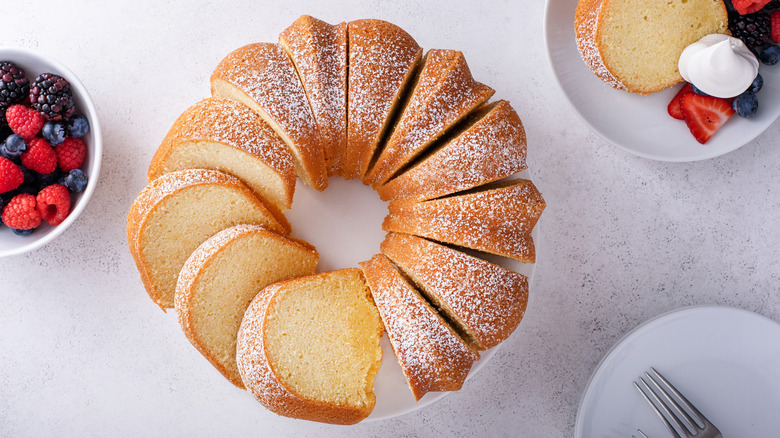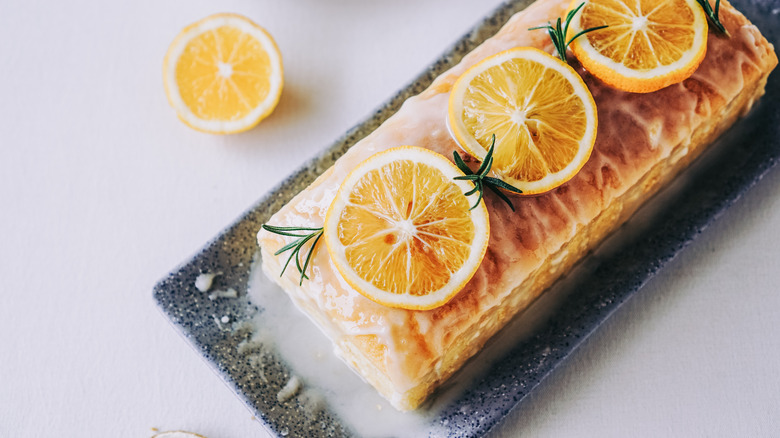The History Of Pound Cake & The Simple Recipe It Was Named After
While new recipes spring up every day, especially on the internet, some recipes are so tried and true that they're still floating around hundreds of years later. This goes especially for simple recipes with few ingredients; when something is easy to make and doesn't require a lot of materials, it's spread around easily, meaning there's much more of a chance of someone recording it so it remains culturally known and relevant. This is the case for pound cake, a baked good that's been around since the 1700s and never truly gone out of fashion.
The pound cake is thought to have originated in Britain sometime in the early 1700s, though its exact creation has been lost to history. The first published recipe, however, came out in 1747 and was published in "The Art of Cookery Made Plain and Easy" by Hannah Glasse. The original recipe was very simple; it involved using a pound each of flour, sugar, butter, and eggs, hence its name. Given that much of the population was illiterate at the time, this simple recipe was easy to remember and wouldn't have to be written down. It was also used in Christian celebrations, namely the Twelfth Night.
We know the pound cake came to America sometime in the 18th century, as Amelia Simmons put a pound cake recipe in her 1796 cookbook, "American Cookery." This was the first cookbook to be published in the U.S., meaning that pound cake is not just a piece of British history, but a piece of American history as well.
How pound cake recipes changed over time
By the time Amelia Simmons published her pound cake recipe in 1796, it had already deviated a little bit from the simple original formula. Simmons' version added rose water, brandy, and spices to up the taste a bit, though it kept the same pound of each main ingredient. Later recipes would reduce these ratios to create a lighter cake, and it became an important dish in the southern United States in the late 19th century. It also made its way to Mexico in this century, likely due to French influence in the country. Here, it was called panqué, and many different variations of the recipe (including cupcakes and a chocolate variety) would eventually come to fruition.
Starting in the 20th century, people began to use baking powder or soda to help the cake rise, which made the entire process much smoother. Pound cake recipes today, such as this classic buttery pound cake from Daily Meal, still use baking powder alongside much lighter versions of the traditional recipe. Rather than a pound of each ingredient, it uses about a cup (though there's a bit more flour than the other ingredients) and adds milk and vanilla extract. There are also tons of variations, adding flavors like lemons (such as in this lost-and-found lemon pound cake) or making the recipe grilled and gluten-free. Some people, including Martha Stewart, still add the brandy included in the 1796 recipe, making a cake that's both a boozy treat and an homage to American history.

